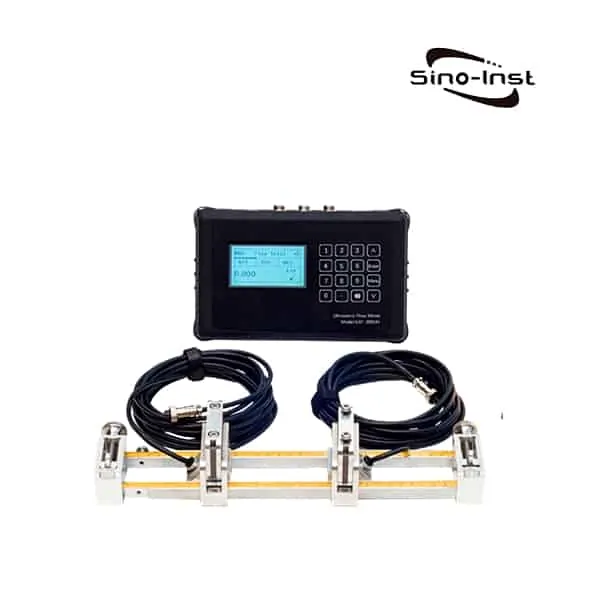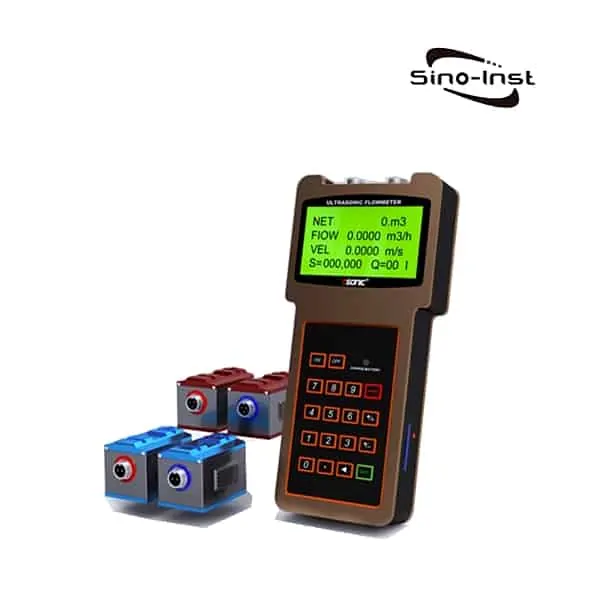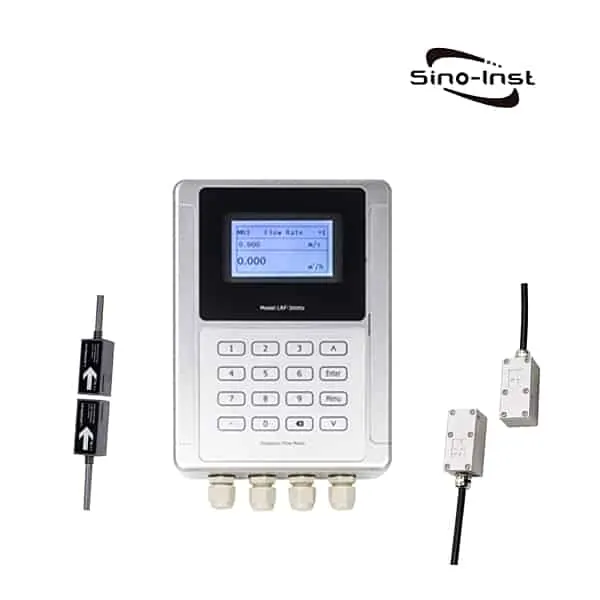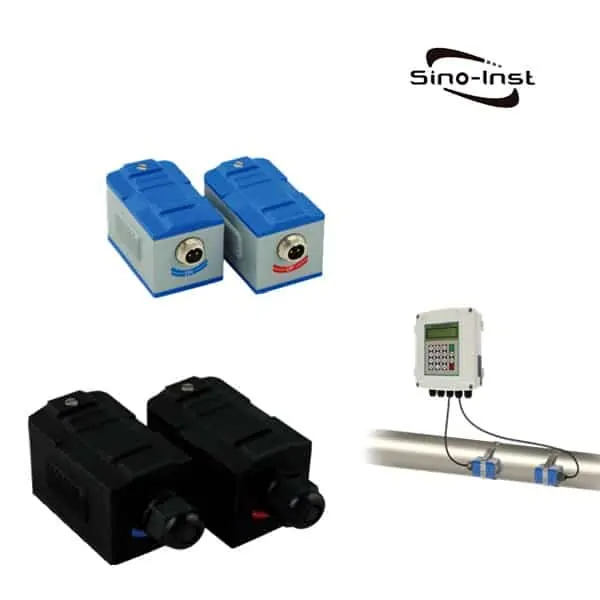Application
Ultrasonic water flow meter
The ultrasonic water flow meter is a commonly used water flow meter. It can be installed with an external clamp, Insertion installation, pipeline installation, etc. Hand-held clamp-on ultrasonic flowmeters are very popular for their ease to use.
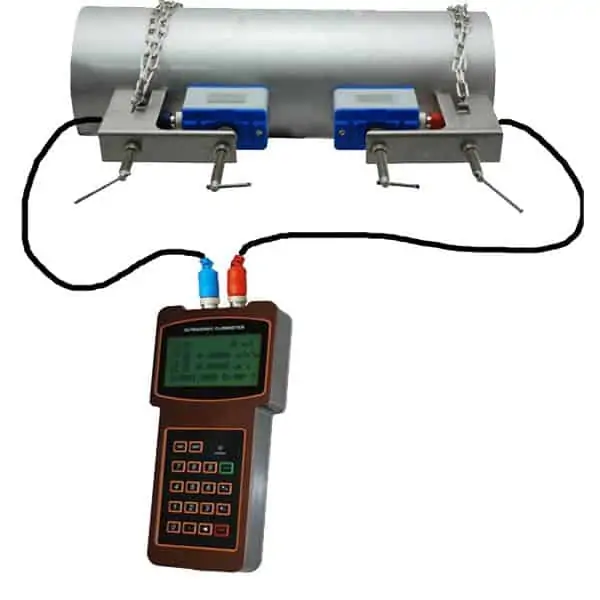
Leak detection method:
Use a portable ultrasonic flowmeter to test the pipeline of the entire system, which can reveal the location of the leak.
The portable flow meter allows the operator to compare the flow rate and the total flow rate at various points in the system.
The low flow at the site indicates that there is a leak nearby. This method is non-invasive and does not require cutting the pipe.
Two ultrasonic flowmeters, one is installed on the water outlet pipe of the reservoir, and the other is installed at the critical intermediate position where the pipe is spread from underground to the ground.
As long as the measurement of the two flowmeters is the same, it means that there is no water leak in the buried pipe network. On the contrary, there is water leak.
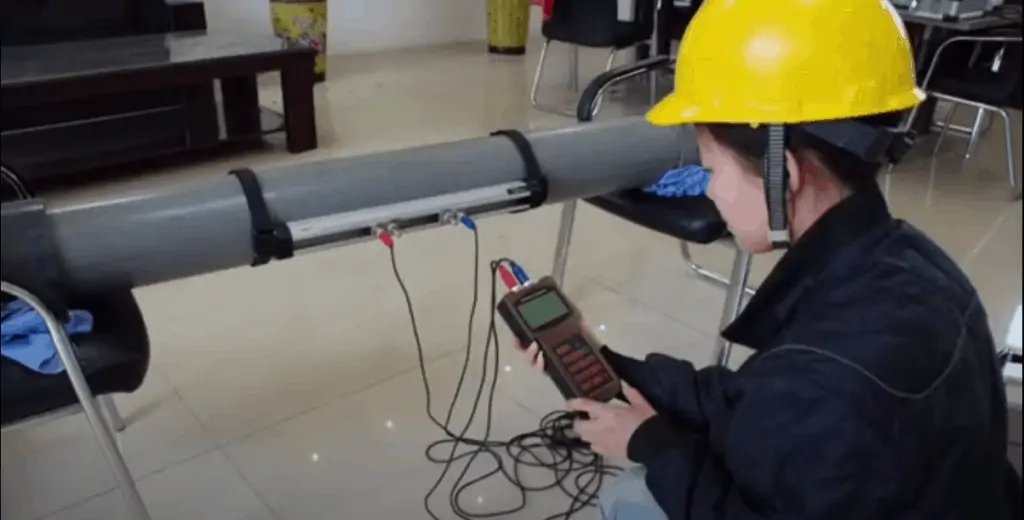
Extended reading: Industrial VS Residential inline water flow meters
When a single conduit in a complex piping configuration is compromised, it can be challenging to locate the precise point where the leak occurred. If you observe an increase in overall water consumption without making any changes, it is likely that a pipe has cracks or cracks.
Read more about: Ultrasonic clamp on flow meter Pros and Cons
Related ultrasonic water flow meters
Read more about: Digital Water Flow Meters
How does an ultrasonic flow meter work?
Transit time Ultrasonic Flow Meter adopts the measurement principle of time difference method. It uses the ultrasonic wave emitted by the sensor to propagate in the flowing fluid. The sound wave propagation speed in the downstream direction will increase, and the backward direction will decrease. In the same propagation distance, there will be different transmission times. According to the difference between the transmission time and the measured The relationship between fluid velocity measures the fluid velocity.
The flow rate of the fluid is different in different positions in the tube. The flow rate in the center of the tube is faster than the flow rate near the wall of the tube. The flow velocity distribution of the fluid in the pipeline can be represented by the flow velocity cross-sectional distribution diagram.
By setting the flowmeter and considering the cross-sectional distribution of the flow velocity, the average flow velocity can be calculated. Then the volume flow of the fluid can be obtained according to the cross-sectional area of the pipe.
Notes:
V measure fluid velocity
M ultrasonic reflection times
D pipe diameter
θ The angle between the ultrasonic signal and the fluid
T up The time when the downstream sensor transmits the signal to the upstream
T down Time from upstream sensor to downstream
ΔT = T up – T down
Guess You’ll Like: Ultrasonic flow meters types & technical guide
Extended reading: Ultrasonic Insertion Flow Meter for Lined/Large Pipes
Sino-Inst, Manufacturer for Ultrasonic Water Flow Meters. It can measure even liquids such as water, seawater, oil, and slurry.
Sino-Inst’s Ultrasonic Water Flow Meter, made in China, Having good Quality, With better price. Our flow measurement instruments are widely used in China, India, Pakistan, the US, and other countries.

Wu Peng, born in 1980, is a highly respected and accomplished male engineer with extensive experience in the field of automation. With over 20 years of industry experience, Wu has made significant contributions to both academia and engineering projects.
Throughout his career, Wu Peng has participated in numerous national and international engineering projects. Some of his most notable projects include the development of an intelligent control system for oil refineries, the design of a cutting-edge distributed control system for petrochemical plants, and the optimization of control algorithms for natural gas pipelines.

